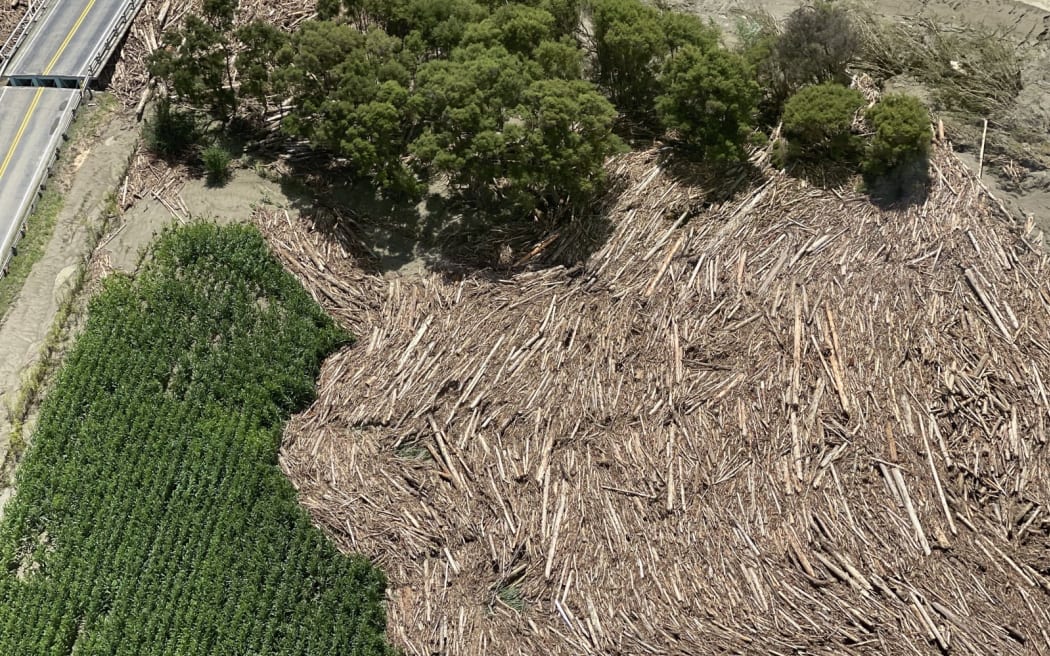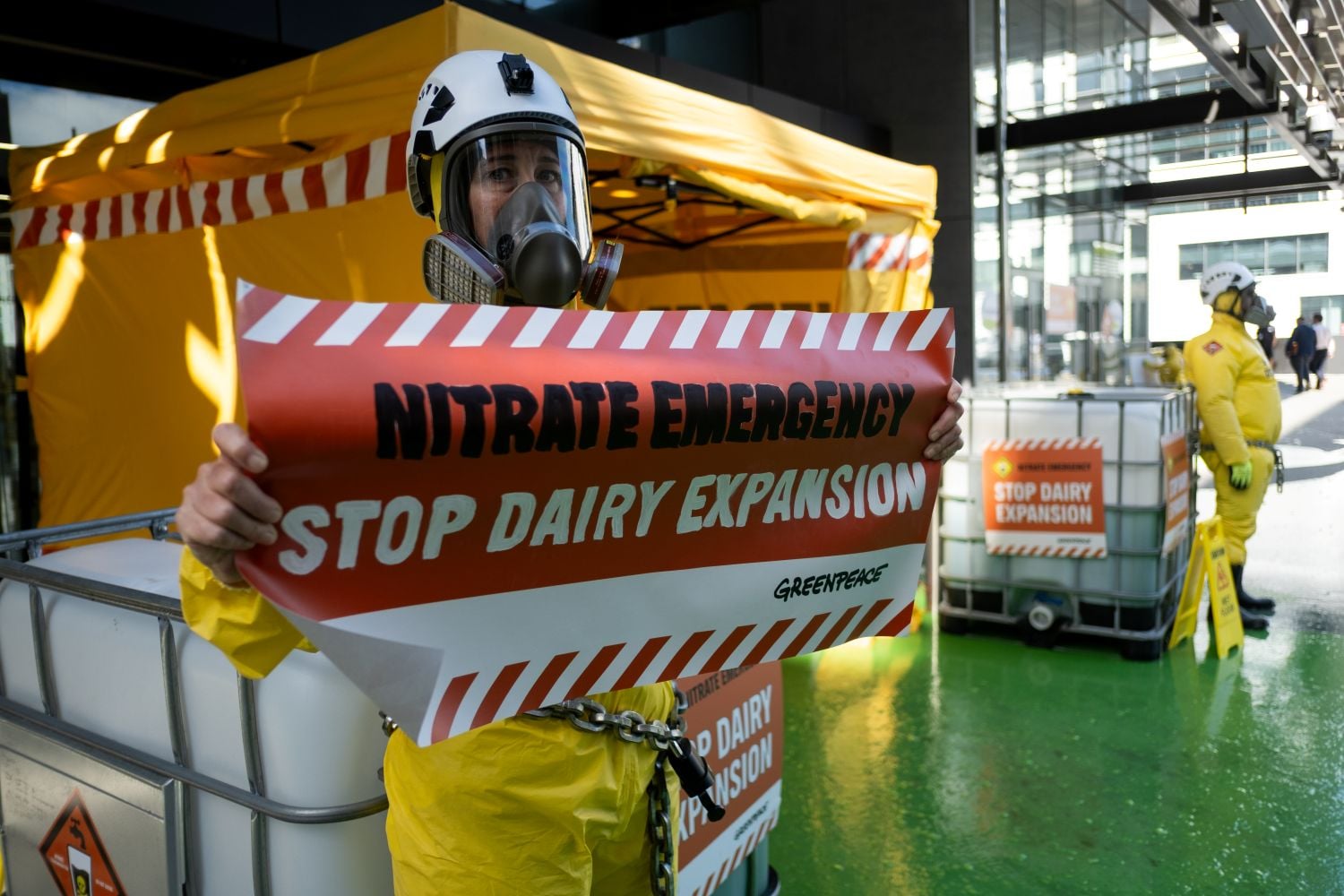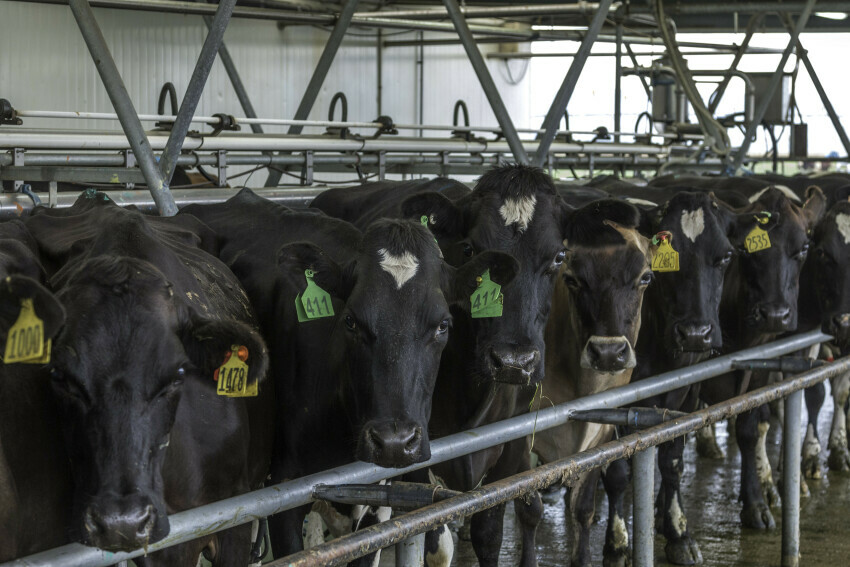The Greenpeace Aotearoa agriculture campaign addresses head-on, New Zealand’s biggest climate polluter: the industrial dairy industry which poisons rivers, contaminates drinking water and blazes the climate. Some of the worst effects are felt in Canterbury and Southland, where dairying has grown more than tenfold in the last three decades.
The dairy explosion has been fuelled by synthetic nitrogen fertiliser and imported feed (such as Palm Kernel Expeller). Greenpeace is working to get the Government and regional councils to phase out synthetic nitrogen fertiliser to stop that pollution and to make way for more plant-based regenerative organic farming.
In May 2022, we went on the road to talk to local campaigners, councillors and candidates, and farmers themselves. It was a roadie filled with heartache – and hope.
The impacts of the anthropocene are clear. Colonisation ushered in the destruction and clearance of wild places in order for monoculture to rule. Canterbury’s rivers were once-mighty and a refuge for animals and people alike, with magnificent braided rivers, bringing icy waters from the Southern Alps to the sea. Now they are dying, drained by irrigation used to prop up the bloated dairy herd, with what little water flow is left contaminated by nitrate from cow urine.
The days of plunging into pristine snow-fed rivers have gone -most rivers are now unsafe to swim in – let alone drink. Rivers that are habitats for endangered native species, sources of pleasure, fun and identity for people, are now toxic and filled with algae. Huge irrigation infrastructure crosses the land like robotic arms, sucking rivers dry. Intensive dairying operations with wall to wall cows, stretch into the river braids, claiming flood plains and river margins for intensive dairy.
The rivers are reduced to polluted trickles. Now three quarters of pastoral rivers are too polluted to swim in, let alone drink from. Nitrate also makes its way into aquifers, contaminating people’s drinking water. Over two thirds of Nitrate levels we have tested exceed the 0.87 mg/L limit linked to bowel cancer in a 2018 Danish study. Even majestic Canterbury high country lakes are also polluted, at tipping point, as intensive dairying takes its toll.
No wonder people were queuing to sign the ‘ECan, Cut Synthetic Nitrogen Fertiliser‘ community petition, when we asked if they wanted to sign up to help save our rivers, at the Lyttelton market.
Next on our trip we went on a tour of the upper Canterbury plains. Fresh snow on the nearby mountains gleamed white in the sun. But the roads were lined with windblown plastic baleage wrap, the flags of a new sort of wasteful and destructive nationalism. Effluent streamed along roads – run off – or out, from stock trucks. Even though it wasn’t quite winter, cows stood miserable in mud.
The following day, we met with an irrigation company CEO, a catchment group leader and a farm innovator. It was an interesting mix and we had some frank conversations. But the industry which seeks to continue business as usual while rivers die and the climate warms. There were admissions that we need to do more for future generations, and that pollution levels are unsustainable. But the dominant extractive, exploitative and intensive dairy model prevails. Especially now that there’s so much investment in irrigation infrastructure – with bills to pay for it.
We also went into Central Otago. Dry high country ecosystems there are also reduced to monocultures, supported by irrigation and synthetic nitrogen fertiliser. The iconic Manuherikia river is a shadow of its former self. Council conflicts about minimum flows needed to sustain river life, but against imperatives to maintain over-extraction for the new dairy farms and old horticulture. Those conflicts threaten to collapse not just the local river ecology, but also the Otago Regional Council itself.
We met councillors and candidates who want to prioritise ‘Te Mana o te Wai’, the mana of the river, as required by law. We workshopped tactics with local campaigners who are ready to represent the river in upcoming council meetings and elections.
The last stop was in Southland. With its cold and wet winters, Southland is renowned for its mud farming or “intensive winter grazing” as the industry likes to call it – where cows packed as densely as two cows per square metre, are grazed (and sometimes calved) on strip-fed winter fodder crops. For months, they live knee deep in mud, forced to sleep, eat and even give birth in afoul mess of mud and excrement. That’s bad for the cows, bad for soils, rivers, and bad for the climate.
But we met with farmers who know there must be a better way. Driven by new generations of farming families who see there must be a better way, intensive dairying is under pressure. But current milk-solid returns are high – providing a strong incentive to increase cow numbers even when it’s unsustainable. Catchment group representatives and farmers we met were excited about the opportunities to restore wetlands, plant rivers, to add resilience to land, water and climate – but all the while pursuing industrial dairying with huge herds – and massive damage to nature. So there’s some good work happening, but without a real change to the farming model, it’s window dressing.
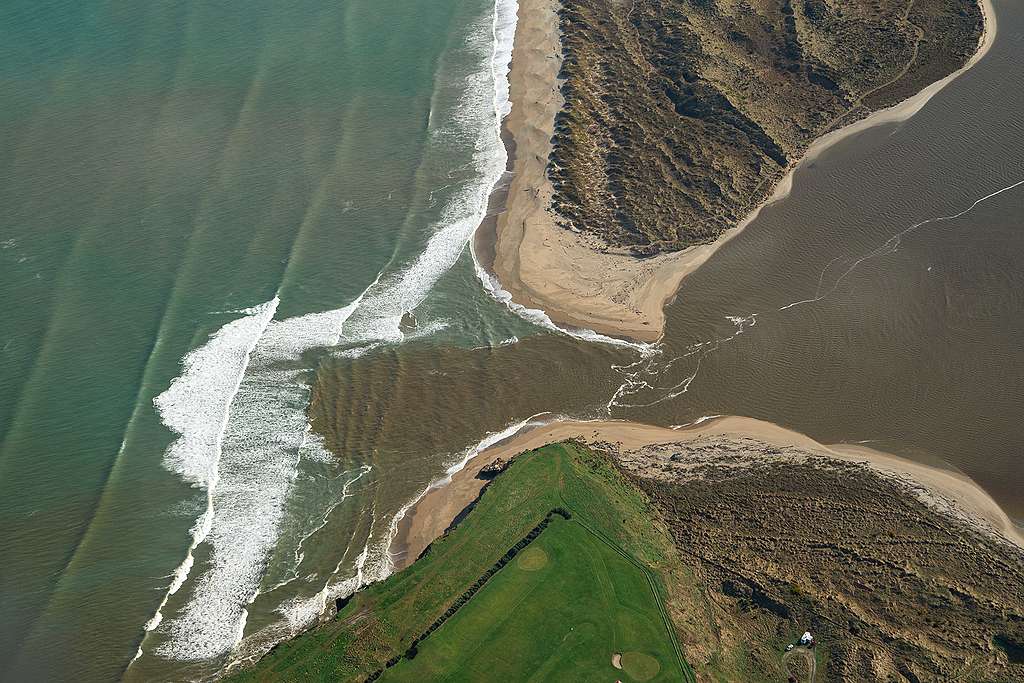
Local community members wistfully reflected on the past when Southland grew 80% of its food. These days, the region mostly just produces cows and milk. New Zealand is now one of the most export oriented economies in the world. Around 96% of the country’s milk products are exported – and we have to import many basic staples that in the past we grew locally. A workshop we attended? on the future of food highlighted the need and opportunity for more plant-based regenerative organic food systems.
We met with regional councillors and staff. They revealed that the government’s freshwater reforms, Te Mana o te Wai, and growing awareness of untenable freshwater pollution are already driving change. But it’s slow. Council planners suggest the need to reduce nitrate levels in rivers by up to 95% – in 25-35 years.
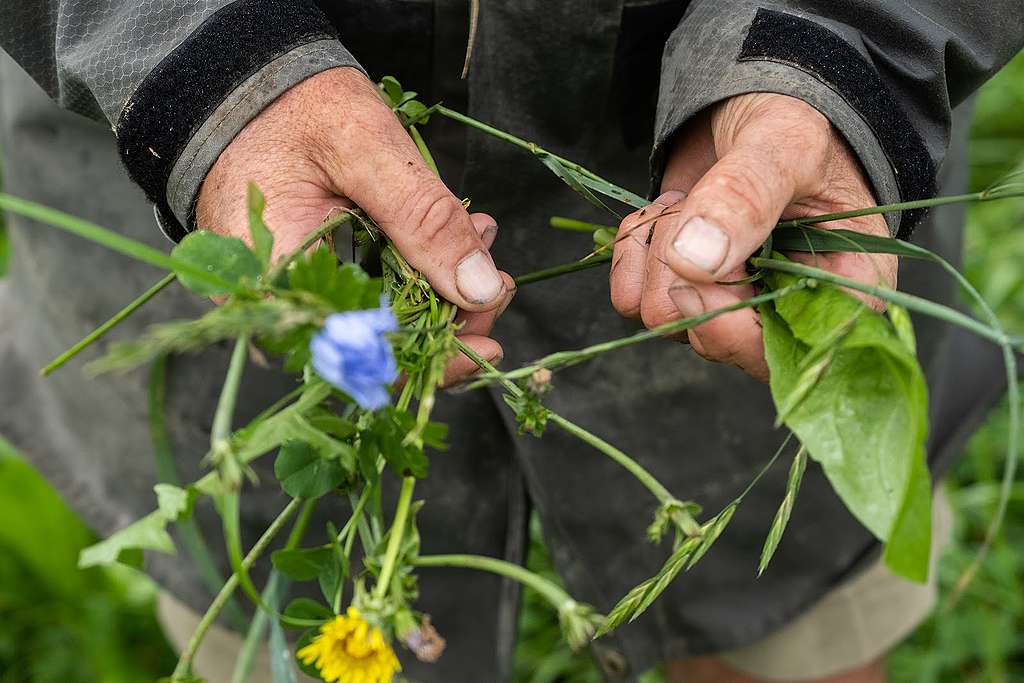
Across Te Wai Pounamu (the South Island), it was clear. We don’t farm what or how we used to in the past, and we can’t farm this way in the future either. It was a roadie of both heartache, and hope.
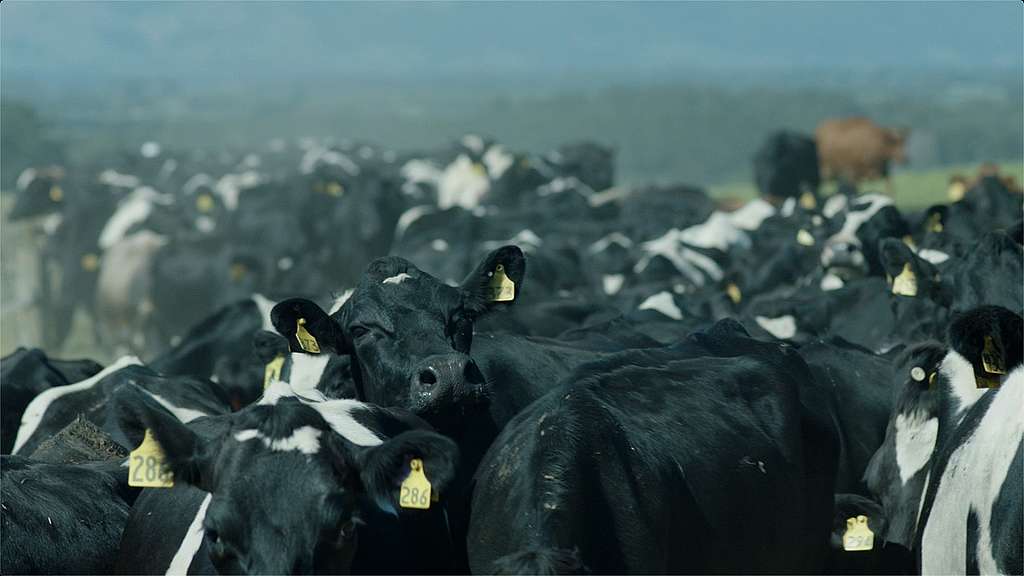
Sign on now to call on the New Zealand Govt to ban chemical nitrogen fertiliser.
Take Action

